Imagine this: you’re an IP attorney buried under stacks of prior art searches, or a startup founder struggling to draft a solid patent application without spending a fortune on legal fees. Now picture an assistant who never tires, processes thousands of documents in seconds, and helps you spot opportunities you might have missed. That’s what the best AI patent tools in 2025 are starting to feel like not a replacement for expertise, but a powerful partner.
In this guide, we’ll evaluate four of the best legal technology companies Patlytics, Ankar, DeepIP, and Patently to see how their AI tools are reshaping the world of patents. Whether you’re part of a law firm, a startup, or working as an IP professional, you’ll walk away knowing which tool might fit your needs and how to think critically about them.
Table of Contents
How We Evaluated These Best AI Patent Tools in 2025
Before diving into each company, let’s set the ground rules. “Best” can mean different things depending on what you care about. Here are the criteria I used, and it’s important to understand why each one matters so much in the complex world of intellectual property:
- Features: What can the tool actually do? We’re not just talking about a basic search bar. The top tools now offer a suite of capabilities, from drafting and claim generation to sophisticated analytics and portfolio management. We need to look at the breadth and depth of these features to see if a tool is a one-trick pony or a genuine end-to-end solution.
- Ease of Use: Is the interface intuitive, or will it take weeks of training and an in-house expert to operate? A powerful tool is useless if it’s too complex for the average user. This is about seamless integration into your existing workflow, not creating a new, frustrating one.
- Accuracy & Reliability: How well does the AI deliver useful, and more importantly, legally sound results? The core of any patent tool is its ability to find relevant prior art and generate credible drafts. We need to look beyond the marketing and consider the potential for “hallucinations” or missed connections that could be devastating in a legal context.
- Pricing: Are the plans transparent and affordable for a range of users, from solo inventors to large firms, or is it exclusively enterprise-only pricing? This is a crucial factor for accessibility and return on investment.
- Best For: Which type of user would benefit most? A startup’s needs are fundamentally different from a global law firm’s. We’ll identify the ideal user for each platform, helping you match the right tool to your specific professional needs.
This framework makes it easier to compare, and it avoids the trap of chasing shiny tech without looking at whether it fits your actual workflow.
Evaluate the Legal Technology Company Patlytics on AI Patent Tools
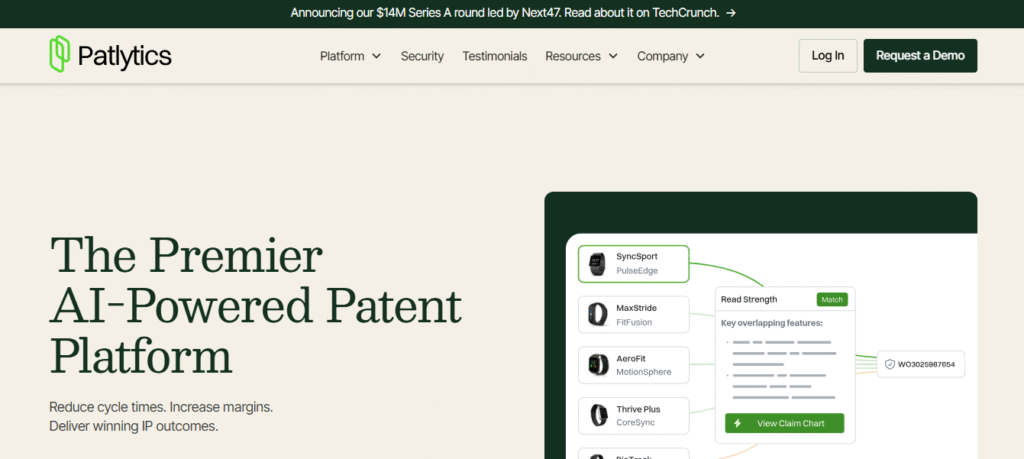
Overview: Patlytics is making waves with its focus on automating patent workflows. They position themselves as more than just a search engine their platform aims to be an end-to-end assistant for patent drafting, claim generation, and prior art analysis. What’s particularly compelling about their approach is the focus on reducing the administrative burden, freeing up legal professionals to focus on strategic work. They’re not just about saving time; they’re about transforming a practice to be more profitable and efficient.
Features: Patlytics has a robust set of features that go beyond the basic search functionality you might expect.
- AI-driven patent search: Their search engine is trained on massive global patent databases, including non-patent literature, to find relevant prior art that a keyword-based search might miss. It’s a semantic search that understands the concept behind your query.
- Claim drafting suggestions: This is where their use of large language models shines. The platform can take an invention disclosure and generate claim language, suggest alternative phrasings, and even check for consistency to identify potential issues before you file.
- Real-time analytics: This is a crucial, and often underrated, feature. The platform provides interactive dashboards to help you manage your portfolio, track competitors, and identify technology trends. This level of insight allows for proactive, strategic decision-making rather than reactive fire-fighting.
- Collaboration tools: Built for legal teams, the platform allows for seamless collaboration on projects, ensuring everyone is working from the same, up-to-date information.
Pros:
- Strong in automation and claim generation: This is arguably their biggest strength. For law firms and in-house counsel handling high volumes of applications, the ability to automate routine tasks is a massive competitive advantage.
- A comprehensive solution for teams: The sleek interface and built-in collaboration features make it ideal for firms that want to streamline their entire patent workflow, from initial drafting to final filing.
- Time-saving: Customer testimonials consistently highlight significant reductions in the time spent on prior art research and drafting, allowing for a focus on high-value legal work.
Cons:
- Pricing can be steep: For smaller firms, startups, or solo inventors, the cost of a full-suite enterprise solution can be a significant barrier.
- Human oversight is essential: As with all AI drafting tools, the output is a starting point, not a final product. The AI won’t magically make patents court-proof, and it’s critical for a human expert to review and validate every claim.
- Analytics is a developing feature: While the analytics side is functional, some users report that it is less mature than the drafting and search capabilities.
Pricing: Patlytics offers tiered subscriptions, with enterprise licenses available for larger firms. The pricing model is reflective of a high-value SaaS platform, aimed at professional users who will see a significant return on investment through efficiency gains.
Best For:
- Law firms handling a high volume of patent prosecution and filing.
- Startups that need robust drafting support but may not have in-house legal teams.
Evaluate the Legal Technology Company Ankar on AI Patent Tools
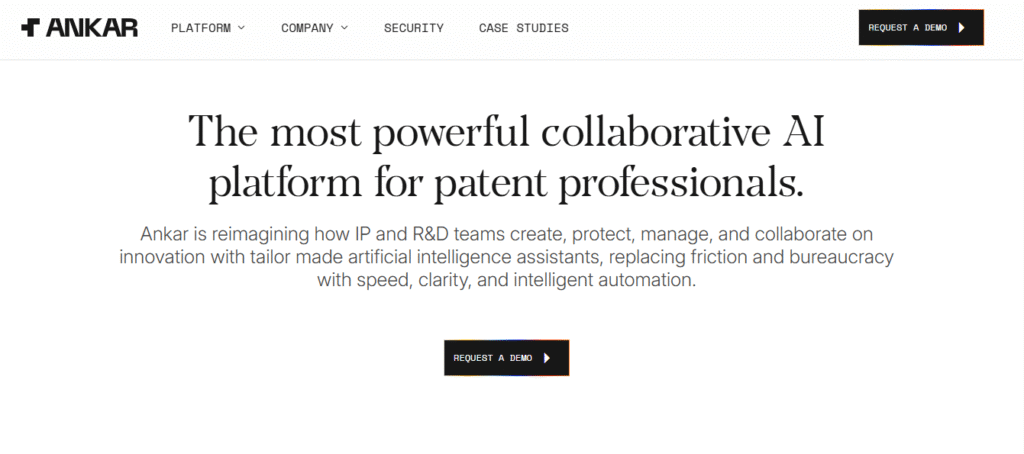
Overview: Ankar is less flashy than some of its competitors, but it has carved a space by focusing on automation at scale. Think of it as a patent generator designed for speed. Their strength lies in their ability to process information and produce initial drafts quickly, which can be a game-changer for companies that need to file a large number of patents. They excel at the early-stage, bulk-processing of ideas.
Features:
- Automated prior art search: Ankar uses AI to conduct a broad prior art search, giving you a starting point for your patentability analysis.
- AI-powered patent generator: This is the core of their offering. The tool can take a technical description and generate a first draft of a patent application, including key sections and, in some cases, figures.
- IP portfolio management: The platform offers a dashboard for managing and tracking your IP portfolio, providing a centralized view of your assets.
- Integrations: Ankar is designed to integrate with standard legal research and workflow platforms, making it easier to fit into an existing tech stack.
Pros:
- Great for bulk processing: If your company needs to quickly file multiple patents or assess a large number of inventions, Ankar’s speed and automation are a huge asset.
- Time-saving generator feature: The ability to generate early drafts in a fraction of the time is a significant benefit for accelerating the innovation-to-filing pipeline.
- Scalable: The platform is designed to handle a high volume of work, making it suitable for growing companies.
Cons:
- Generated drafts can be generic: The drafts produced by the AI often require significant human editing and refinement to meet legal standards. This is a crucial point to understand—the AI provides a skeleton, but you must provide the legal and technical substance.
- Limited documentation: Some users report that the platform’s documentation is not as extensive as it could be, leading to a steeper learning curve for advanced features.
- Not as strong in analytics: Compared to a tool like DeepIP, Ankar’s analytics capabilities are less sophisticated.
Pricing: Ankar offers flexible subscription models, including startup packages and larger plans aimed at enterprise IP departments. This flexibility makes it an attractive option for a wider range of businesses.
Best For:
- Startups and SMEs that prioritize speed and efficiency in their filing process.
- Companies with large R&D departments that need to screen a high volume of invention disclosures.
Evaluate the Legal Technology Company DeepIP on AI Patent Tools
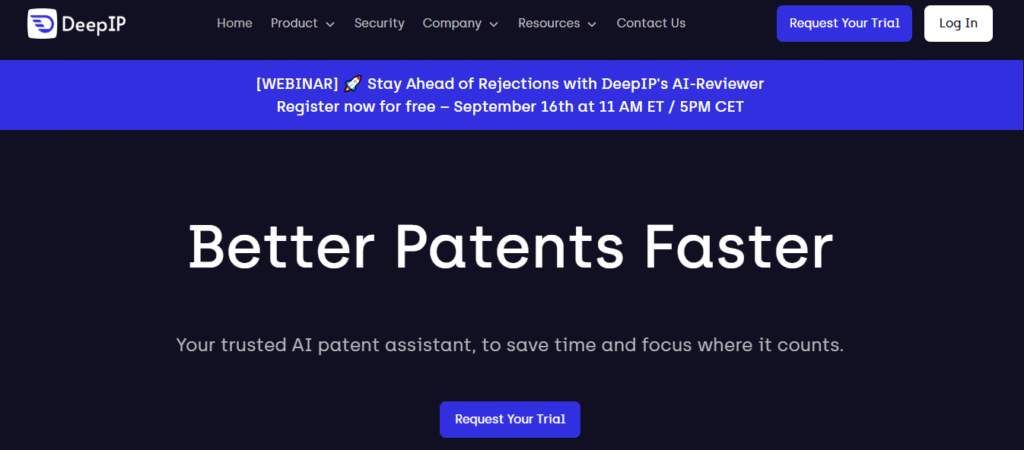
Overview: DeepIP takes a data-heavy approach. Instead of just helping you draft patents, it’s built around analytics — spotting portfolio trends, identifying risks, and predicting litigation outcomes. Their platform is an intelligence tool as much as it is a drafting assistant, providing insights that can inform your entire business and IP strategy.
Features:
- Advanced AI prior art search: DeepIP’s search engine uses a sophisticated semantic analysis to go beyond keywords and find highly relevant prior art. It’s designed for precision and accuracy, not just speed.
- Litigation risk predictions: This is a key differentiator. The platform can analyze a portfolio and provide a risk assessment, helping you identify potential infringement issues or weak patents that may be vulnerable in court.
- Portfolio benchmarking and analytics: DeepIP allows you to compare your IP portfolio against competitors, spot gaps in your coverage, and identify emerging trends in your industry.
- Collaboration and reporting: It provides robust tools for teams to work together and generate custom reports, making it easier to communicate IP strategy to non-legal stakeholders.
Pros:
- Excellent analytics engine: This is where DeepIP truly shines. The insights provided can be invaluable for strategic business planning and risk management.
- Appeals to firms and enterprises: The advanced features are perfectly suited for companies and firms managing large, complex portfolios.
- Strong focus on accuracy: The platform is built on a foundation of data and analytics, which instills a high degree of confidence in its results.
Cons:
- Pricing is on the higher end: The advanced features come at a cost, and DeepIP’s pricing is typically enterprise-focused, making it less accessible for smaller users.
- Steeper learning curve: Due to the complexity of the analytics and reporting features, new users may face a steeper learning curve than with simpler tools.
- More useful for firms than solo inventors: A solo inventor or small startup may find the extensive analytics features to be overkill for their needs.
Pricing: DeepIP focuses on enterprise-level packages with custom quotes, reflecting its value as a strategic business intelligence tool.
Best For:
- Established law firms with a focus on IP strategy and litigation.
- R&D-heavy companies protecting and managing large IP portfolios.
Evaluate the Legal Technology Company Patently on AI Patent Tools
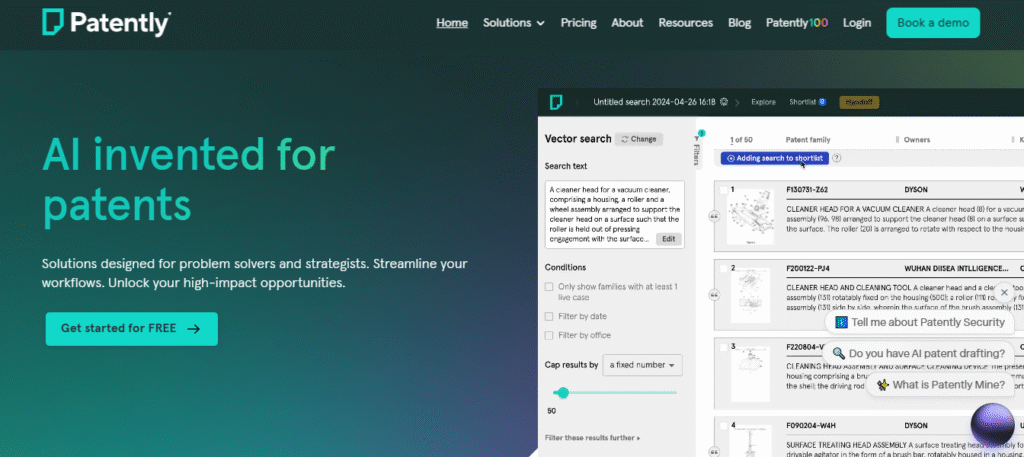
Overview: Patently markets itself as the “accessible” AI patent tool a lighter platform aimed at making IP more approachable. While it may not have the sheer power of DeepIP or Patlytics, it’s user-friendly, affordable, and provides a fantastic entry point for those new to the world of patents.
Features:
- AI search engine: Patently provides a solid prior art search engine that is easy to use and provides relevant results.
- Drafting assistance with templates: The platform offers drafting tools and templates to help users create a professional-looking patent application.
- Simplified analytics dashboards: It provides basic analytics that can help a solo inventor or small business owner understand their IP position without being overwhelmed by data.
- Collaboration features: Patently offers basic collaboration features for small teams, allowing them to work together on a project.
Pros:
- Easy to use: The interface is clean, intuitive, and requires minimal training. This makes it a great option for people who are not IP professionals.
- Affordable pricing tiers: Patently’s pricing is transparent and accessible, with plans that cater to individuals and small teams.
- Good fit for small businesses: For a startup or an individual inventor who is just beginning to explore the patent process, Patently provides all the essential tools without the complexity or cost of a larger platform.
Cons:
- Fewer advanced features: Compared to the bigger players, Patently’s features are more limited. It’s not designed for high-volume, complex legal work.
- Analytics and drafting tools feel limited: The tools are good for getting started, but they may not scale well for large projects or a growing portfolio.
- May not scale well for large firms: A large law firm or enterprise would likely find the platform to be insufficient for their needs.
Pricing: Patently offers transparent monthly plans and a free trial, making it a very low-risk option for new users.
Best For:
- Solo inventors and entrepreneurs.
- Startups and small businesses just beginning to file patents.
- Educational institutions teaching IP basics.
Comparison of the AI Patent Tools
Patlytics
- Key Features: Drafting, analytics, and team collaboration.
- Pricing: Mid-to-high range.
- Strengths: Strong in automation and claim generation, a comprehensive solution for legal teams.
- Weaknesses: Can be expensive for smaller users, and the analytics side is still evolving.
- Best For: Law firms and startups with high patent filing volumes.
Ankar
- Key Features: Automated patent generator and prior art search.
- Pricing: Flexible, with options for startups.
- Strengths: Excellent for speed and bulk drafting of early-stage patents.
- Weaknesses: Generated drafts often require significant editing and can be generic.
- Best For: Startups and SMEs that need to file patents quickly.
DeepIP
- Key Features: Advanced analytics, litigation prediction, and portfolio benchmarking.
- Pricing: High-end, with custom enterprise packages.
- Strengths: Best-in-class analytics engine, providing strategic insights.
- Weaknesses: Pricey and has a steeper learning curve due to advanced features.
- Best For: Established law firms and R&D-heavy companies managing large portfolios.
Patently
- Key Features: User-friendly prior art search, simple drafting, and templates.
- Pricing: Low-to-mid range, transparent plans.
- Strengths: Easy to use and affordable, a perfect entry point for new users.
- Weaknesses: Lacks the advanced features and scalability of more robust platforms.
- Best For: Solo inventors, small teams, and educational purposes.
The Future of AI in Patent Tools
Looking ahead, AI patent tools will only get smarter. Some platforms are already experimenting with predictive filing strategies suggesting the best jurisdictions to file in based on market trends. Others are tying AI into blockchain for IP verification, creating an immutable record of inventorship.
But with every leap forward comes a question: how cautious should we be? In my post on [How to cautiously use AI for work], I argued that blind trust in automation can backfire. That’s especially true here a sloppy AI-generated patent could cost you far more than it saves, potentially leading to a worthless asset or even litigation. The legal and ethical issues surrounding AI inventorship and the potential for bias in algorithms are real and need to be carefully considered.
There’s also the bigger question of jobs. Will these tools replace attorneys? Probably not. They’ll change the role, sure but lawyers and inventors who embrace AI will have the edge. Instead of spending hours on routine tasks, they can focus on strategy, client relationships, and the nuanced, high-level thinking that only a human can provide. As a profession, we’ll need to adapt and evolve, and those who learn to work with AI will be the ones who lead the way. (I wrote about this more in [How to avoid AI taking your job?].)
Final Thoughts
So, what’s the takeaway? The best AI patent tool in 2025 isn’t about finding “the one.” It’s about matching the right tool to your needs. If you’re filing dozens of patents a year, you’ll lean toward DeepIP or Patlytics to handle the volume and provide strategic insights. If you just need a lightweight, user-friendly option to get started, Patently might be more than enough. Ankar, meanwhile, fills a valuable niche for those who need to prioritize speed and bulk processing.
At the end of the day, AI won’t replace the creativity, judgment, and strategy behind strong IP but it can take the grind out of the process. And honestly, who wouldn’t want that? It’s about leveraging technology to empower human expertise, not to replace it.
What are AI patent tools?
AI patent tools are software platforms that use artificial intelligence to help with tasks like prior art search, patent drafting, claim generation, and portfolio analysis. They don’t replace lawyers but speed up and improve the accuracy of the patent process.
Which AI patent tool is best for startups?
For startups, Ankar and Patently are often the best fit. Ankar is strong at bulk patent generation, while Patently is affordable and easy to use for first-time filers.
Do AI patent tools replace patent attorneys?
No. These tools assist with research and drafting, but human oversight is critical. Patent attorneys provide legal judgment, strategy, and expertise that AI cannot replace.
How much do AI patent tools cost?
Pricing varies. Patently offers low-cost monthly plans, while Patlytics and DeepIP focus on higher-end enterprise subscriptions. Most tools scale based on the size of the firm or portfolio.
- machine learning in spend classification

- Machine Learning RFP

- Best AI Patent Tools in 2025: Evaluating Patlytics, Ankar, DeepIP, and Patently

- Search Is Changing the Game in 2025: How AI Understands Search
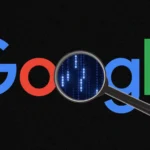
- which is easy cybersecurity or artificial intelligence

- how to build high-performing trading strategies with ai


